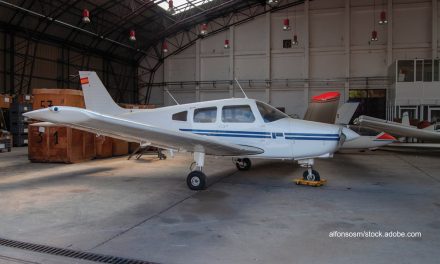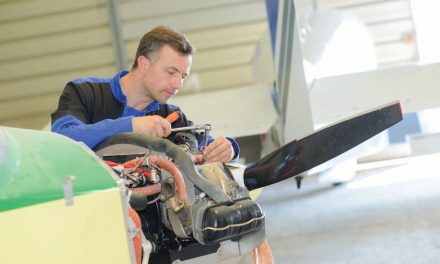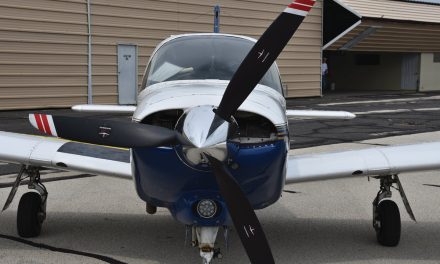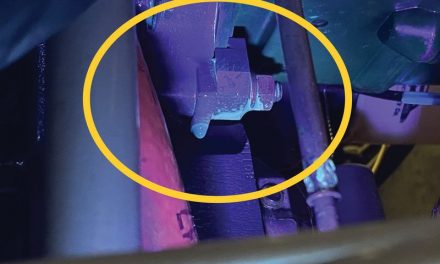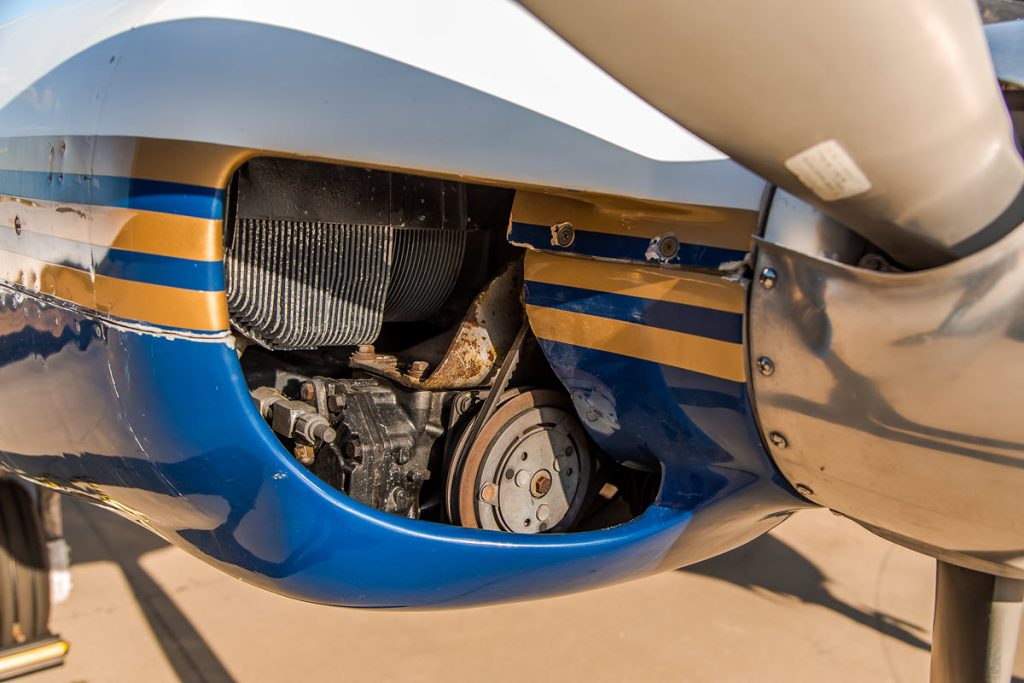
Piper Owner Society receives quite a few questions over our tech support line and we are grateful to A&P/IA, Erich Rempert, who takes the time to field these questions. Since every plane problem is unique and we are unable to visually inspect your plane, we advise you to consult with your A&P/IA.
QUESTION: I put this question to the blog and got a response to check the flaps. I purchased the Piper from hell from a dealer in Arizona that said one thing, but did not speak any truth at all.
A 1973 Cherokee 140/160 upgrade. No logbook damage history. First annual was $10,000. Now it should be good to go, but when in level flight, the left-wing drops.
I checked the position of ailerons vs. the inboard flap end and with the right aileron even with the flap end, the left aileron is about ⅜” above the left flap end.
This aircraft has a knob adjustment on the floor that moves the nosewheel to adjust rudder pressure while flying. When landing, this knob when turned to the right to center the alignment bar on its position, the nose wheel starts to shimmy. I have replaced the shimmy damper with a new lord unit, but the wheel still shimmies.
Besides the aileron adjustment, perhaps the nose wheel adjustment needs to be considered. For level flight, where should the nose wheel adjustment be placed? All the way left? All the way right? Centered? I cannot find anything that advises me where to place this adjustment.
Previous airplanes owned…1980 Archer, 1962 Bonanaza, 1965 310J (2500 hours), L2, 150, now this one.
The plane has had the spar AD done. Could the wing rigging be an issue?
Thank you for any help you can offer.
ANSWER: Based upon the description it sounds like it’s out of rig.
Obviously make sure your fuel load is even and bring a passenger with you equal to your weight to make sure the aircraft is evenly balanced. Adjust the control on the floor to see if it has any effect on the ball in the turn coordinator. If you can adjust the control to center the ball in cruise, put a mark in that location and leave the control set in that spot.
Then in smooth air, with the ball centered, see if the airplane has a heavy wing; if it does, you probably can adjust the flaps to trim the heaviness out. If you make an adjustment, you’ll likely have to recenter the ball with the floor control before checking on your roll adjustment.
Once you have it flying with the ball centered and no heavy wing, check to make sure the yokes appear level in cruise, and then look to see if the ailerons are in trim with the wing tips. If the yokes are crooked, or the ailerons are hanging down on both sides you will have to make some rigging adjustments to the aileron control system.
Keep in mind the ailerons neutralize in flight and adjustments will affect whether the yokes are level or not (if done asymmetrically) or where the ailerons neutralize in trail (up or down, if adjustments are done evenly) but don’t correct for a heavy wing.
Also keep in mind rigging adjustments need to be signed off by someone with at least an airframe mechanics license. Once these adjustments are made and it’s flying straight and level hands off, you’ll probably find the shimmy issue is gone as well.
The wing inspection for the AD has absolutely no effect on rigging.
QUESTION: I have a Piper Aztec F 1977 and would like to know how to correct the AD on the tail horn stabilator. Pre-1971 Aztecs tend to thwart the pilot’s best attempts at trimming and roam a bit in altitude. A stronger stabilator down spring in the E model improves longitudinal stability, but control pressure in the flare suffers as a result. The stabilator and stabilator-balance system were changed with the introduction of the F model, but Piper later switched again from external to internal balance weights after AD 79-26-1 targeted cracks and attachment problems. Another change in the F model was incorporation of a flap-stabilator interconnect to reduce the pitch-up tendency. Do I need an entire new Stabilator or is there a way to remove the weight and horns and change the weight component?
ANSWER: I assume he’s wanting to go to a later style balance. This is something he needs to work through with his IA, as they are the one who will need to return the aircraft to service and take responsibility for the mod. However, assuming this is a legal mod with approved data I would look at the IPC for a part’s breakdown and compare his arrangement to the arrangement he wants to change to. Anything different would be required to be changed. I’d also look at salvage yards like BAS, White, and Wentworth to see what parts are available and their cost.
QUESTION: I have had a recent nose-wheel shimmy on my PA- 28-181, a problem which has arisen a number of times during my 25-year ownership. A previous shimmy was resolved with a new nosewheel tire, and my mechanic rebuilt the shimmy dampener. The shimmy has returned a couple of years later. He checked bearings, brake linings and the rotor disc with no apparent anomalies.
He and I (he is also a pilot) did a high-speed taxi test today. We had the shimmy when slowed and with aggressive braking with the yoke back to take weight off the nosewheel. The rudder pedals were jumping erratically – but only as we slowed below 30 knots or so. We tried again with the yoke neutral or slightly nose down and the shimmy was not discernable. Clearly putting weight on the wheel discouraged the shimmy. I flew off grass for about 10 years so was used to holding the hose off for takeoff and landing. Now I am back on pavement.
Do you have an opinion on the proper position of the elevator during roll-out and braking? Any comment on the leading cause of shimmy.
Thanks again for your advice.
ANSWER: The brakes and MLG are not responsible for or contributing to the NLG shimmy. How many hours a year does the airplane fly? If it sits a fair deal, a flat spot will inevitably develop and the out of round/out of balance condition will upset the cart and set off the shimmy.
If the wheel and tire assembly are round and in balance the controlling mechanism can be quite loose and the system will still operate smoothly. When it is out of round or out of balance it must be very tightly held to keep it under control.
If the tire and wheel are round and in balance, check the NLG bearings for condition, proper lubrication, and proper pre-load (by verifying the nose fork through bolt has been properly torqued).
Next stop is loose bushings and hardware in the NLG (especially the torque links or “scissors”), and looseness in the rudder control system.
Lastly check the shimmy damper for air, if fluid has leaked out, replace the seals and service it with fresh fluid.
Eliminating the cause of the shimmy and limiting the system’s ability to oscillate will result in properly tuned assembly allowing full range of use regardless of surface or technique.
If you had it working well a few years ago, and now it doesn’t, reflect on what’s changed since then; and realize time takes its toll on everything, airplanes need periodic maintenance.
QUESTION: Hi, I own a 1978 Piper Arrow. My mechanic retired and I have a new guy working on my plane. He said to change the oil he needs an oil change adapter. In the 40 years that I have owned the plane I’ve never heard of this. What is an oil change adapter? Someone please enlighten me. Thanks.
ANSWER: Your plane has a quick drain for the oil that requires an adapter. That should be kept with your airplane (for obvious reasons). Your previous mechanic kept it in his toolbox so he always had one when you came in for an oil change and therefore never had to ask you for it. Have your new guy get one and then keep it in the plane with your oil stuff. Be sure to check that you have it when you leave after your oil change each time.
QUESTION: Finishing up an inspection on a PA-32-300 and I have a question about the seat tracks. There is an extra seat track attached to the spar cap. It is attached via screws and nuts to the top of the spar. I get a little nervous seeing holes in any spar cap. I cannot find this track in the Parts, Maintenance, or Aircraft manual. Is this track supposed to be here and if so what is the purpose of this seat track?
ANSWER: That looks like a rail to attach quick release cargo hold downs. Is there something similar in the back of the cabin? If it’s mounted to the spar cap with non-standard holes and fasteners, I’d look through the paperwork for a log entry (337) and possible STC. If none of that exists and you are struggling with the approval basis and worried about the structural integrity, you may need to involve engineering.
Piper would be one way to go, they would probably take the longest, be the most costly, and likely be the most restrictive. Hiring a private DER to look at it and write up an analysis would be quicker, less expensive, and have a better chance of justifying the mod as is, or coming up with a reasonable repair. A DER’s report or engineering data from Piper would be the approved data you would cite for either approving the mod or it’s repair on a 337.
I just did a pre buy on a Navion and found some non-standard access panels that seriously compromised the structure of the wings. ANY time someone approaches an aircraft with a drill, grinder, or saw they should be absolutely sure what they’re about to do is necessary, appropriate, and legal.
You can do very costly “permanent” damage in under a minute without thoughtful consideration before taking action. We’ve all heard the analogy of the guy who taps the ship’s engine to get it fixed and charges $50,000 for 10 minutes of his time. Paying for experience can be a bargain! Don’t be penny wise and dollar foolish with maintaining your airplane.
QUESTION: I am looking for someone with info on getting approval for changing over from bench seats to bucket seats on my 1970 Piper PA-28R-200. I have all the parts (seats, belts, floor, and have ordered the channel assembly P/N 99117-800), but need help doing it legally.
ANSWER: Was PA-28R-200 available from the factory in both configurations, so possibly just an evolution in design/equipage? Are you only using parts out of the IPC for the PA-28R-200? If so, you need to weigh the cumulative parts for each installation and figure out the difference, if it’s more than 1 pound, or if the seating position changes you need to make an updated weight and balance. Otherwise, you just make a log entry stating you removed the bench seat assembly consisting of part number’s xxx and installed bucket seat assembly consisting of part number’s xxx, noting the weight and balance either updated or change found to be negligible. The reason for the ease of change is if the parts and configurations are already approved on the Type Certificate for your airplane. If they are not, either because you’re installing parts from another model not on the TC your airplane is on (like PA-28 seats in a J3 Cub), or if the parts you want to use are not eligible for your SN; you would likely need to get a Field Approval and file a 337. If it’s not an alteration to the TYPE DESIGN specified on the TYPE CERTIFICATE you don’t need to file a Major Alteration form 337, and your Approval Basis is the Type Certificate. Hence you just log the work as if you changed any other part. If your intended changes don’t fit that framework, you either need to make the changes in accordance with an STC, AD, or get some other approval basis like a Field Approval or Engineering.
QUESTION: Can you weld the engine frame on when frame is on airplane?
ANSWER: Gas weld yes, electric weld maybe. Theoretically yes, because the current should only go between the tip of the welder and ground, but “I’ve seen some things” and I’m not sure I’d risk it. The welder should know if stray current poses a threat, but if he’s wrong and after the repair the radios or alternator don’t work who do you think will be footing the bill? Also, what’s wrong with the mount that it needs to be welded? And who will be signing off the repair?
Typically, unless this is being done by an FAA Approved repair station “on wing,” I’d lean towards sending the mount to a reputable shop like AWI or similar for an OH. Just because an Airframe mechanic CAN fix it doesn’t mean they SHOULD. There are shops who specialize in this work and do it every day. Seems like an aircraft engine mount is a good candidate to have the best eyes on, not the cheapest.
QUESTION: Looking for information on compromised rivets. The rivets have been sanded down.
The rest of this article can be seen only by paid members who are logged in.Have a website login already? Log in and start reading now.
Never created a website login before? Find your Customer Number (it’s on your mailing label) and register here.
JOIN HERE
Still have questions? Contact us here.
Erich Rempert holds an Airframe and Powerplant Mechanic certificate, a Repairman’s certificate for instruments, inspection authorization, and is a multi-engine rated private pilot. He was born into a flying family, soloed on his 16th birthday, earned his Private Pilot certificate in the family Navion at 17, and earned his Multi-engine rating the following year in his family’s Cessna 310P. He has been a pilot for 29 years and been professionally involved in aviation for 24 years, including 15 years as an avionics specialist. He now proudly owns and flies the 1958 Navion D in which he earned his Pilot’s Certificate more than 26 years ago.

